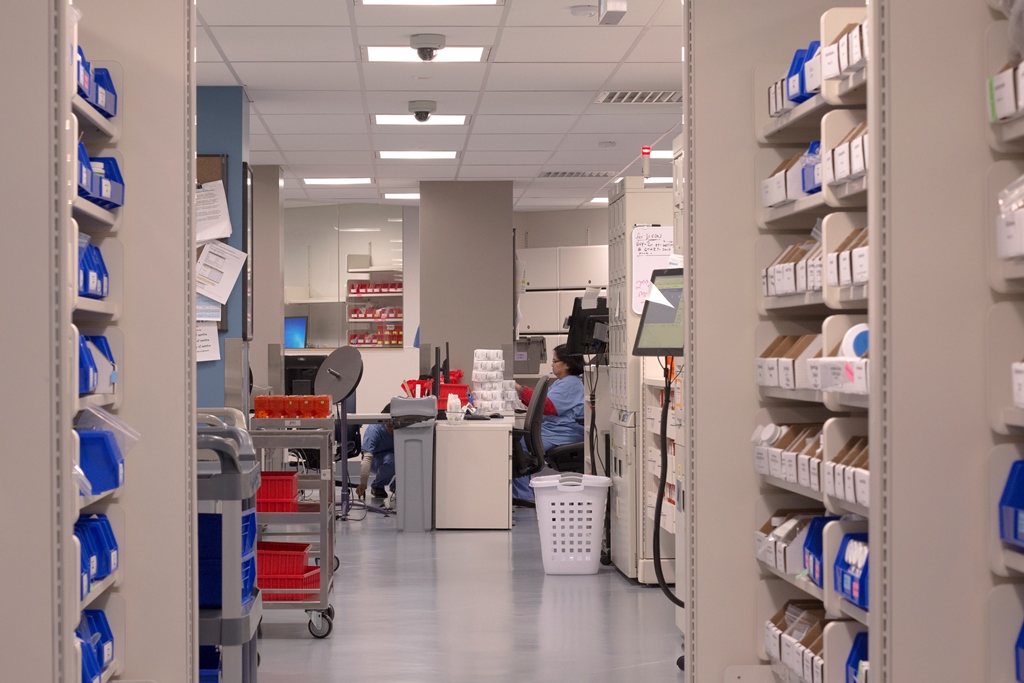Vancouver Pharmacy Production Centre goes live with Cerner clinical information system
On Wednesday, April 4, the Vancouver Pharmacy Production Centre (VPPC) went live with one module of the new Cerner clinical information system. It’s part of the same system that’s going to be rolled out across VCH, PHSA and PHC over the next three years as part of the Clinical & Systems Transformation (CST) project.
It’s a cause for celebration among health professionals and patients alike.
“The VPPC go-live is more of a ‘behind the scenes’ roll-out,” says Tessa Valg, Regional Manager, Drug Distribution Systems and Production Centres, Lower Mainland Pharmacy Services. “We’re going live with the Supply Chain module, which is the purchasing, receiving, inventory and financial tracking of medications.”
Sure, it might not be visible to everyone, but April 4 is still a step forward for the production centre – which has been providing services to acute and residential sites throughout VCH, PHC and some PHSA agencies since the fall of 2016 – and the CST project.
It’s the first tangible evidence that the CST project is making a positive difference to health care in B.C.

The Vancouver Pharmacy Production Centre is located at VGH.
A safer future
It’s the patient who ultimately benefits from improved medication management. Statistics tell us that up to 24,000 Canadian adults die every year because of preventable adverse events in acute care hospitals, and about half of those are medication-related. Going digital reduces the risk of errors that come with deciphering handwriting in a paper-based system.
The production centre is pivotal to realizing Closed Loop Medication Management – a fully electronic medication management process (ordering, verifying, preparing and administering) in which all relevant information is documented seamlessly.
The closed loop process injects technology into every step, including those critical seconds before patients receive medications – when so much is going on. All medications must be packaged individually and have a barcode. To close the loop safely, patients will be electronically identified by a barcoded wrist band. Barcodes provide a way to ensure the right medication and dose is given to the right patient at the right time.
“We’ll be catching what we don’t even know is happening currently.”
“In the future state, if you scan the wrong medication, the system is going to tell you, ‘Hang on, this isn’t the medication that I’m expecting.’ And to me, that’s where the huge value of this new system is. We’ll be catching what we don’t even know is happening currently,” says Tessa. “There’s no question that the end result is safer.”
The VPPC will interact with the rest of the Cerner system starting on April 28 – when Lions Gate Hospital and Squamish General Hospital go live with the new system and processes as well.
One step closer to reducing adverse medication events
For now, the April 4 go-live with the supply chain module will be celebrated by those in the know. But they’ll do it quietly.
“On go-live day, we need to let everyone get on with the day. The production centre is an incredibly busy environment, and nothing can slow down with this go-live as all the sites depend on the facility every day,” says Tessa. “It will be business as usual.”
Learn more about Closed Loop Medication Management in this video:

